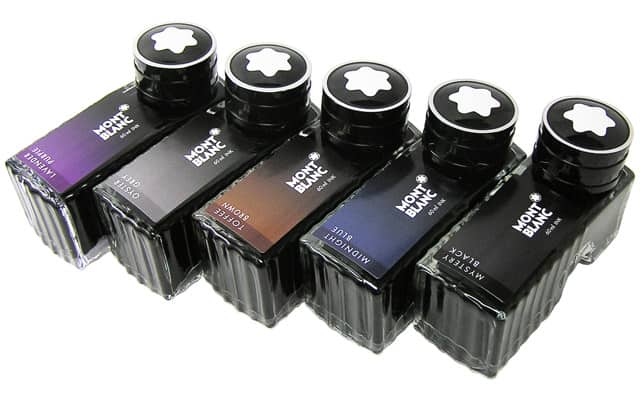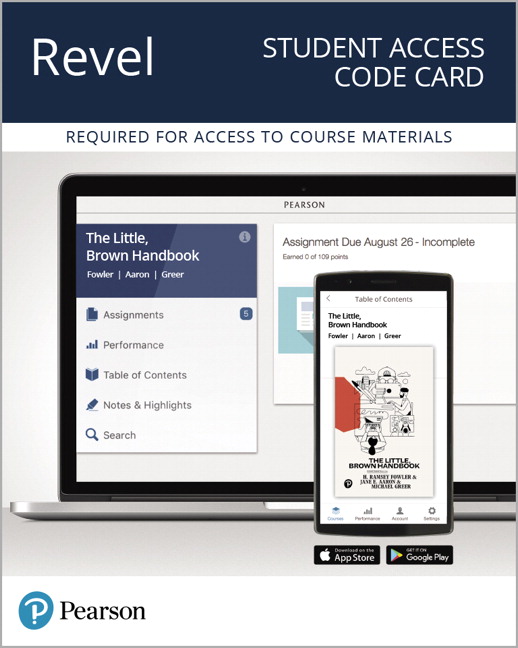
Custom Research Paper Services - Learn about all of Paper Masters' custom research paper and writing services.
The Beat Generation - growing their hair long, dressing in blue jeans and tie-dyed shirts, and listening to the rock and roll of the Beatles, the Grateful Dead and others.
Music and Culture - Music as an art form and a mode of expression can be found in every human culture on the planet.
African Literature - African Literature essay discuss African literature from the 1970's to 1990's.
Related Research Paper Topics
Order a custom research paper on ANY topic.
Poverty Research Papers are custom written on the sociology problem of Poverty. Order a research paper on Poverty from Paper Masters.
The Blues vocals began as work songs, spirituals or field hollers, and instrumentals were provided by clapping hands, or playing the guitar.
These are just a few names that James Brown has picked up throughout his sixty-four years. Over James Brown’s lifetime he has experienced many obstacles on his way to fame. He grew up in a whorehouse, plugged away at a musical career that he always wanted, and made rock-n-roll what it is today. Despite a rough childhood, problems with law and involvement with civil rights, James Brown is one of the most dynamic performers in American music history.

Ink defines itself not only by color. There are many more characteristics to all the inks out there. Here are some of them.
If you try to buy bulletproof inks for cartridge pens, you will soon notice that such ink doesn’t exist. This is due to the fact that especially pigmented inks need very intensive care and pens filled with them should be cleaned often. Since it’s very difficult to clean pens working with ink cartridges, the industry doesn’t offer pigmented inks for these.
Probably you have heard of German celebrity Johannes Gutenberg, the inventor of the letterpress with moveable letters. However, it’s a less known fact that for the use with his printing press, he invented a special ink that was oil-based.
Our knowledge of ink goes back to around 2500 BC. It probably were the Chinese that first invented ink by mixing carbon particles or lamp black with gum arabic. Of course, fountain pens didn’t exist at that time, so it seems probable that this kind of ink would not work very well with modern writing instruments. Chinese used this ink with brushes.
Water Based Inks

Herbin
French Firm J. Herbin, primarily a calligraphy supplier, offers many shades of ink, water-based inks as well as pigmented ones. A huge pro for this firm is the fact that they offer real photographed writing samples instead of computer-made samples so you can get a very realistic image of the „spirit” of the ink. Price varies between $10 – 28 per bottle.
Many inks are water-based. These inks have the downside that they soon fade out when exposed to sunlight. Furthermore, you should be advised to keep them away from liquids since they are not water-resistant. The good news: some water-based inks such as the German standard, Pelikan 4001 Royal Blue are erasable with so-called ink killers.
In Medieval Europe, ink was used to write on parchment. Beginning in the 5th century A. D., iron gall inks gained popularity. (I will explain the meaning of iron gall ink later.) Another way to apply ink to a writing surface is the use of a quill pen. This method was popular until the 19th century but has its roots back in the 6th century.
It was an invention of the Chinese when so-called India Ink first appeared in the 4th century BC. India Ink, although invented by Chinese, got its name from the fact that items needed for production were imported from India. India Ink was the first ink featuring tar, pitch and burnt bones as ingredients. According to experts, India Ink was invented in the 4th century, however the oldest artifacts featuring India Ink are many decades younger: the Dead Sea Scrolls, finished in A. D. 68.

Since the word limit is quite generous, you should write about all three types of goals the question asks for - academic, personal, and professional. Ask yourself questions to generate ideas about what to write.
Brown appreciates students who are excited to make a difference in their communities, regardless of the scale. So in your answer to this prompt among the Brown supplemental essays 2020-2021 , it would be wise to mention a couple of activities at the school that make you excited to collaborate with your peers and take on an active role while at Brown.
Think about how attending Brown and specifically the PLME can help you attain your goals. What are you looking forward to the most about PLME? You can write about how the chance to conduct research with faculty from different disciplines at Brown can allow you to combine two passions: for example, medicine and economics, or medicine and political science.
The generous word limit allows you to delve into your academic interests and goals. Admissions officers want to feel confident about a student’s knowledge of both schools and how they would take advantage of access to each institution’s course offerings. Expanding on the departments and courses you’re interested in each school is a great chance to show Brown that you have interdisciplinary interests and are excited to approach problems from different mindsets.
Download the full interview with Mariama here!
- Emphasize community - Remember, Brown is interested in students who are determined to make a difference in their communities and in the world. Community comes up constantly in the prompts, and for a reason. You must be a community leader and willing to work with others. Admissions officers don’t always expect that impact to be on a huge scale - they know you’re still in high school. If you’ve made even a small change in your local community, that’s also something interesting you can focus on in your Brown supplemental essays 2020-2021 .
- Avoid repetition - With all of these questions asking you about your interests and favorite topics and activities, it can be easy to want to talk about the same thing over and over again. Avoid that at all costs. Each of the Brown supplemental essays 2020-2021 are meant to add new information about you to your application. And the topic of your essay doesn’t have to stay true to the theme of your application. Brown appreciates multifaceted individuals, so don’t hesitate to write on something the reader might not have guessed about you!
- Connect your answers to Brown - A lot of students apply to Brown because of the Ivy League status or ranking. If you’re actually interested in Brown, the supplemental essays can assist you in proving to admissions officers that you know what you’re talking about. Go through social media pages and the Brown website to jot down what you like and in your responses, show the reader that you’re as good of a fit for the school as the school is for you. Be as specific to Brown as possible, weaving in your knowledge of the school to exemplify that you’re making a well-informed decision.
Nikki Champlin, a writing expert from Yale and the Iowa Writer's Workshop, gives her advice for writing supplemental essays here:
If you have space, you can also look to answer other questions about your community. What is a typical day like in the community? What makes it feel like home - is it the conversations, is it the deep trust with the members, or is it simply the combination of the people?
When addressing the actual profession of a physician/doctor, talk about what continues to draw you to the medical profession. According to Mariama, PLME wants students who recognize the importance of doctors working with their community, and specifically with different people. As a result, you should prioritize your ability to connect with people across social, economic, and cultural boundaries in your writing through use of concrete examples.

- Accessible Reference Guide: Features streamlined explanations
Additional topics give the text relevance beyond an academic setting
- Visual and Media Literacy: Helps students learn to process nonverbal information and use it effectively in their writing.
- New - Coverage of multimodal and online composing can be found in Chapter 5.
- Writing Beyond the Classroom: Extends the handbook’s usefulness beyond academic writing, including discussions of social media and job application writing.
- New - Composing for social media, in workplace and public situations, is now covered in Chapter 11.
- Guidance for Culturally and Linguistically Diverse Writers: Provides extensive rhetorical and grammatical help, with examples, for writers whose first language or dialect is not standard American English.
Check out the preface for a complete list of features and what's new in this edition.
Overview
Dynamic content designed for the way today's students read, think, and learn
- Academic Writing: Gives students a solid foundation in the goals and requirements of college writing, with 18 examples of academic writing and an emphasis on critical analysis, academic integrity, research writing, and more.
- New - All of the student samples in this edition, from short works in progress to complete papers, are new. More than 90 total samples are included, with topics and sources that are timely and attuned to student interests.
- Writing as a Process: The handbook takes a practical approach to assessing the writing situation, generating ideas, developing the thesis statement, revising, and other elements of the writing process.
- Research Writing: Discusses finding sources, managing information, evaluating and synthesizing sources, integrating source material, avoiding plagiarism, and much more.
- New - Coverage and visual examples of database searches are now in Chapter 42.
- Documentation: Covers four documentation styles — MLA, Chicago, APA, and CSE — and reflects each style’s latest version.
- Updated - All model papers and sample citations in the book have been updated to align with the new MLA and Chicago Manual of Style documentation styles.
- Usage, Grammar, and Punctuation: Core reference material reliably and concisely explains basic concepts and common errors, provides hundreds of annotated examples from across the curriculum, and offers frequent exercises.
Additional topics give the text relevance beyond an academic setting

- TheВ assignment calendarВ allows educators to indicate precisely which readings must be completed on which dates. This clear, detailed schedule helps students stay on task by eliminating any ambiguity as to which material will be covered during each class. When they understand exactly what is expected of them, students are better motivated to keep up.
- TheВ performance dashboardВ empowers educators to monitor class assignment completion as well as individual student achievement. Actionable information, such as points earned on quizzes and tests and time on task, helps educators intersect with their students in meaningful ways. For example, the trending column reveals whether students' grades are improving or declining, helping educators to identify students who might need help to stay on track.
- LMS integrationВ provides institutions, instructors, and students easy access to their Revel courses via Blackboard Learnв„ў and Canvasв„ў. With single sign-on, students can be ready to access an interactive blend of authors' narrative, media, and assessment on their first day. Flexible, on-demand grade synchronization capabilities allow educators to control exactly which grades should be transferred to the Blackboard or Canvas Gradebook.
- Videos and interactives integrated directly into the author-created narrative keep students engaged as they read through each chapter. Thanks to this media-rich presentation of content, students are more likely to complete their assigned reading and retain what they’ve read.
- EmbeddedВ assessmentsВ such as quizzes and concept checks afford students opportunities to check their understanding at regular intervals before moving on. Assessments in Revel let instructors gauge student comprehension frequently, provide timely feedback, and address learning gaps along the way.
- The Revel mobile app lets students read, practice, and study – anywhere, anytime, on any device. Content is available both online and offline, and the app syncs work across all registered devices automatically, giving students great flexibility to toggle between phone, tablet, and laptop as they move through their day. The app also lets students set assignment notifications to stay on top of all due dates.
- TheВ writing functionalityВ in Revel enables educators to integrate writing – among the best ways to foster and assess critical thinking – into the course without significantly impacting their grading burden.В
- Self-pacedВ Journaling PromptsВ throughout the narrative encourage students to express their thoughts without breaking stride in their reading.В
- Exploratory Writing PromptsВ are embedded invention exercises, giving students the opportunity to produce real writing that can be incorporated into their drafts and larger works. In many cases, these prompts are scaffolded across the chapter to help familiarize students with a structured writing process.
- AssignableВ Shared Writing ActivitiesВ direct students to share written responses with classmates, fostering peer discussion.В
- AndВ Essays,В integrated directly within Revel, allow instructors to assign the precise writing tasks they need for the course.В
- A library of 500В pre-built writing assignmentsВ helps students grow and hone their academic, professional, and civic writing skills.В
- Three hundred Writing Assignments and 200 Multimodal Assignments cover everything from argument, to research, to modes and genres – across mediums like traditional type, video, audio, and graphic text – while encouraging literacy, critical thought, and invention.
- A library of 500В pre-built writing assignmentsВ helps students grow and hone their academic, professional, and civic writing skills.В
- Self-pacedВ Journaling PromptsВ throughout the narrative encourage students to express their thoughts without breaking stride in their reading.В
- Highlighting, note taking, and a glossaryВ let students read and study however they like. Educators can add notes for students, too, including reminders or study tips.
Superior assignability and tracking tools that help educators make sure students are completing their reading and understanding core concepts
The platinum standard of handbooks — unmatched in accuracy, currency, and reliability
Features
- Academic Writing: Gives students a solid foundation in the goals and requirements of college writing, with 18 examples of academic writing and an emphasis on critical analysis, academic integrity, research writing, and more.
- New - All of the student samples in this edition, from short works in progress to complete papers, are new. More than 90 total samples are included, with topics and sources that are timely and attuned to student interests.
- Writing as a Process: The handbook takes a practical approach to assessing the writing situation, generating ideas, developing the thesis statement, revising, and other elements of the writing process.
- Research Writing: Discusses finding sources, managing information, evaluating and synthesizing sources, integrating source material, avoiding plagiarism, and much more.
- New - Coverage and visual examples of database searches are now in Chapter 42.
- Documentation: Covers four documentation styles — MLA, Chicago, APA, and CSE — and reflects each style’s latest version.
- Updated - All model papers and sample citations in the book have been updated to align with the new MLA and Chicago Manual of Style documentation styles.
- Usage, Grammar, and Punctuation: Core reference material reliably and concisely explains basic concepts and common errors, provides hundreds of annotated examples from across the curriculum, and offers frequent exercises.
Additional topics give the text relevance beyond an academic setting
Revel is Pearson’s newest way of delivering our respected content. Fully digital and highly engaging, Revel replaces the textbook and gives students everything they need for the course. Informed by extensive research on how people read, think, and learn, Revel is an interactive learning environment that enables students to read, practice, and study in one continuous experience – for less than the cost of a traditional textbook.
- Visual and Media Literacy: Helps students learn to process nonverbal information and use it effectively in their writing.
- New - Coverage of multimodal and online composing can be found in Chapter 5.
- Writing Beyond the Classroom: Extends the handbook’s usefulness beyond academic writing, including discussions of social media and job application writing.
- New - Composing for social media, in workplace and public situations, is now covered in Chapter 11.
- Guidance for Culturally and Linguistically Diverse Writers: Provides extensive rhetorical and grammatical help, with examples, for writers whose first language or dialect is not standard American English.
- Visual and Media Literacy: Helps students learn to process nonverbal information and use it effectively in their writing.
